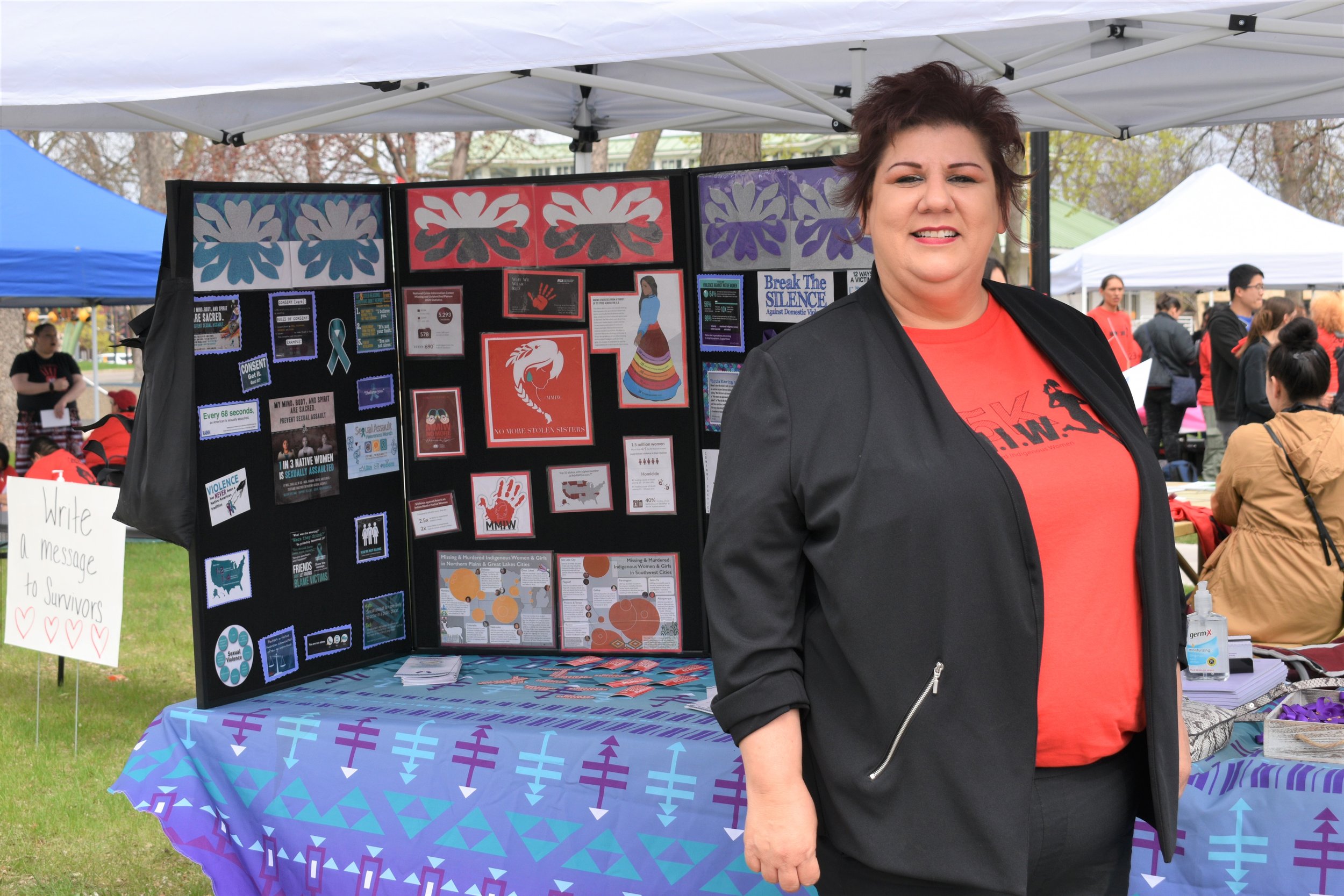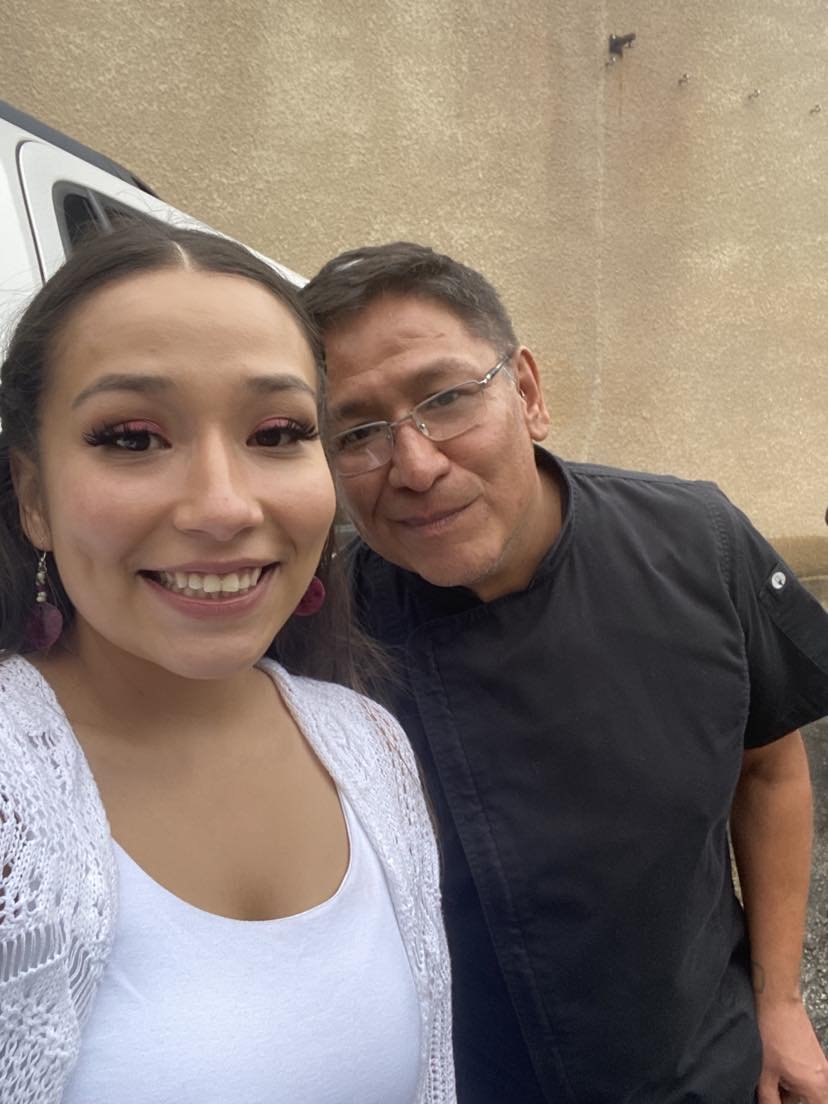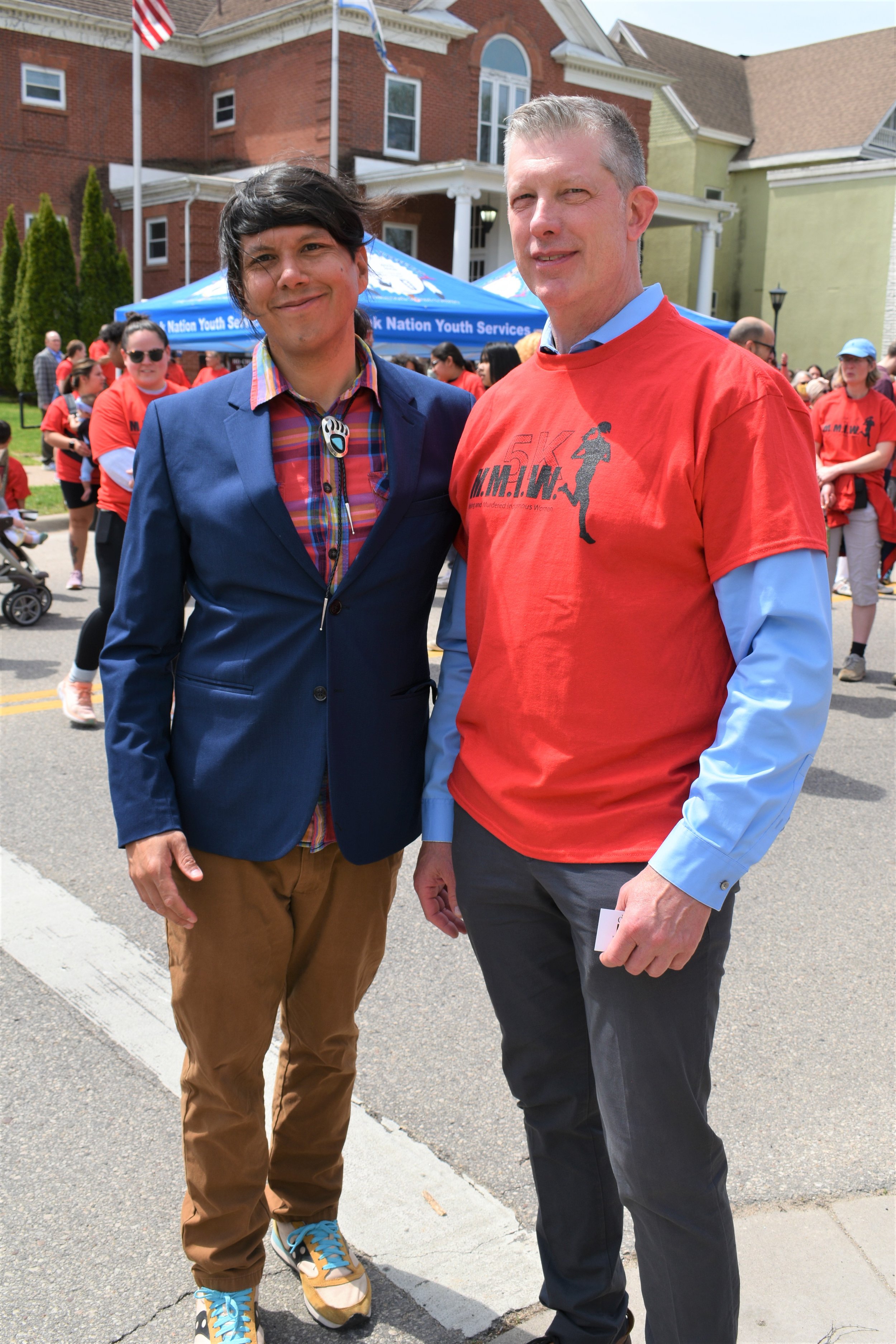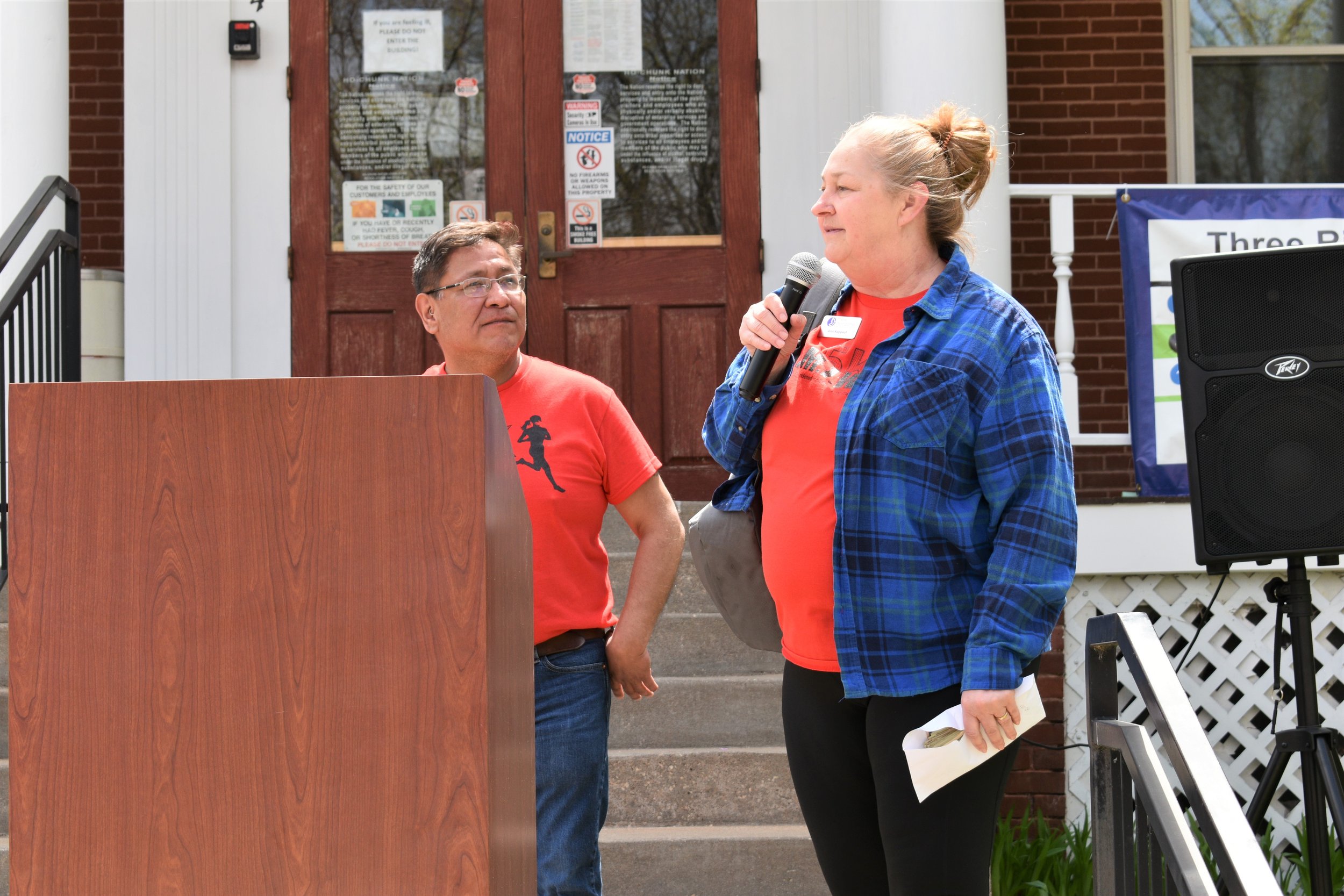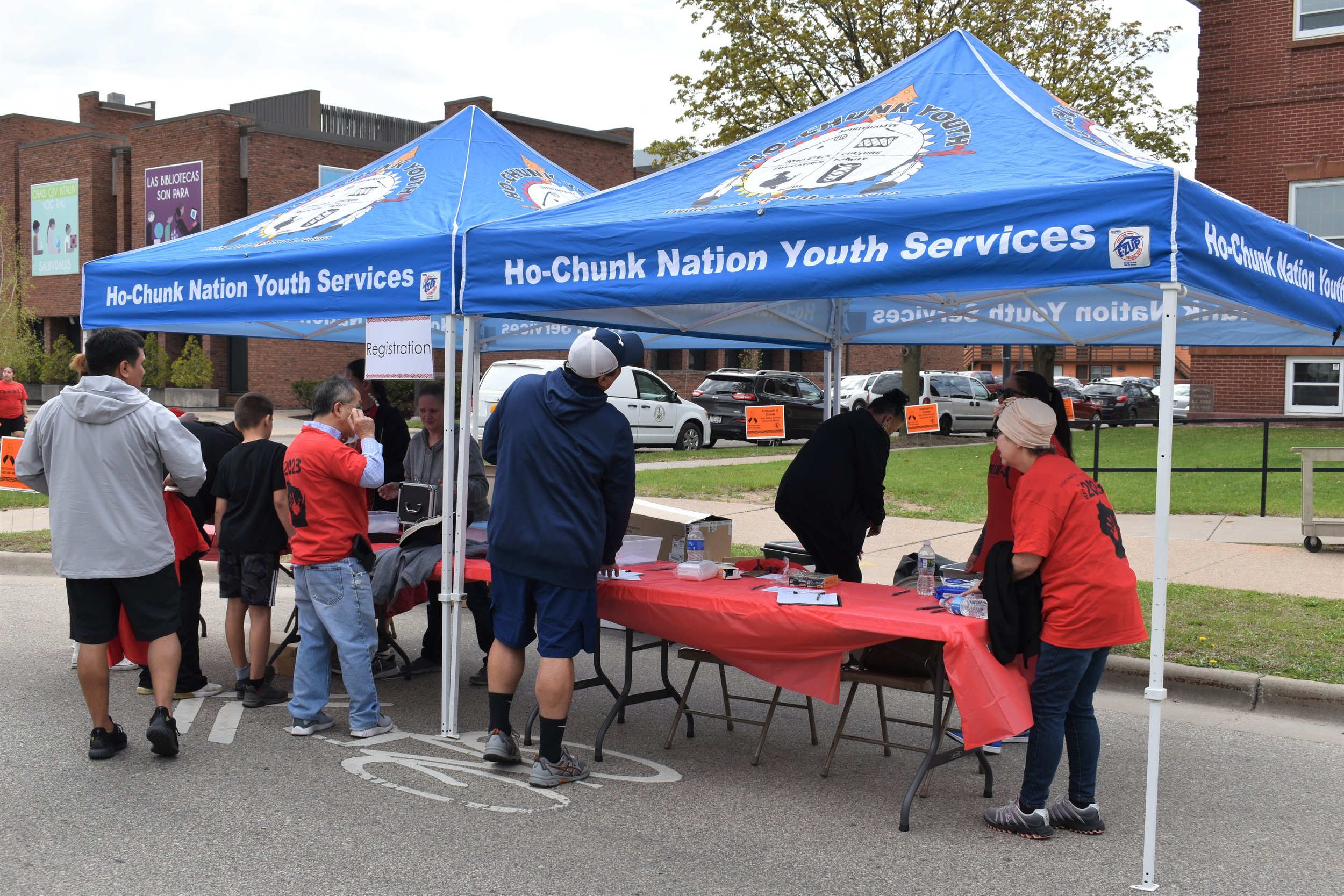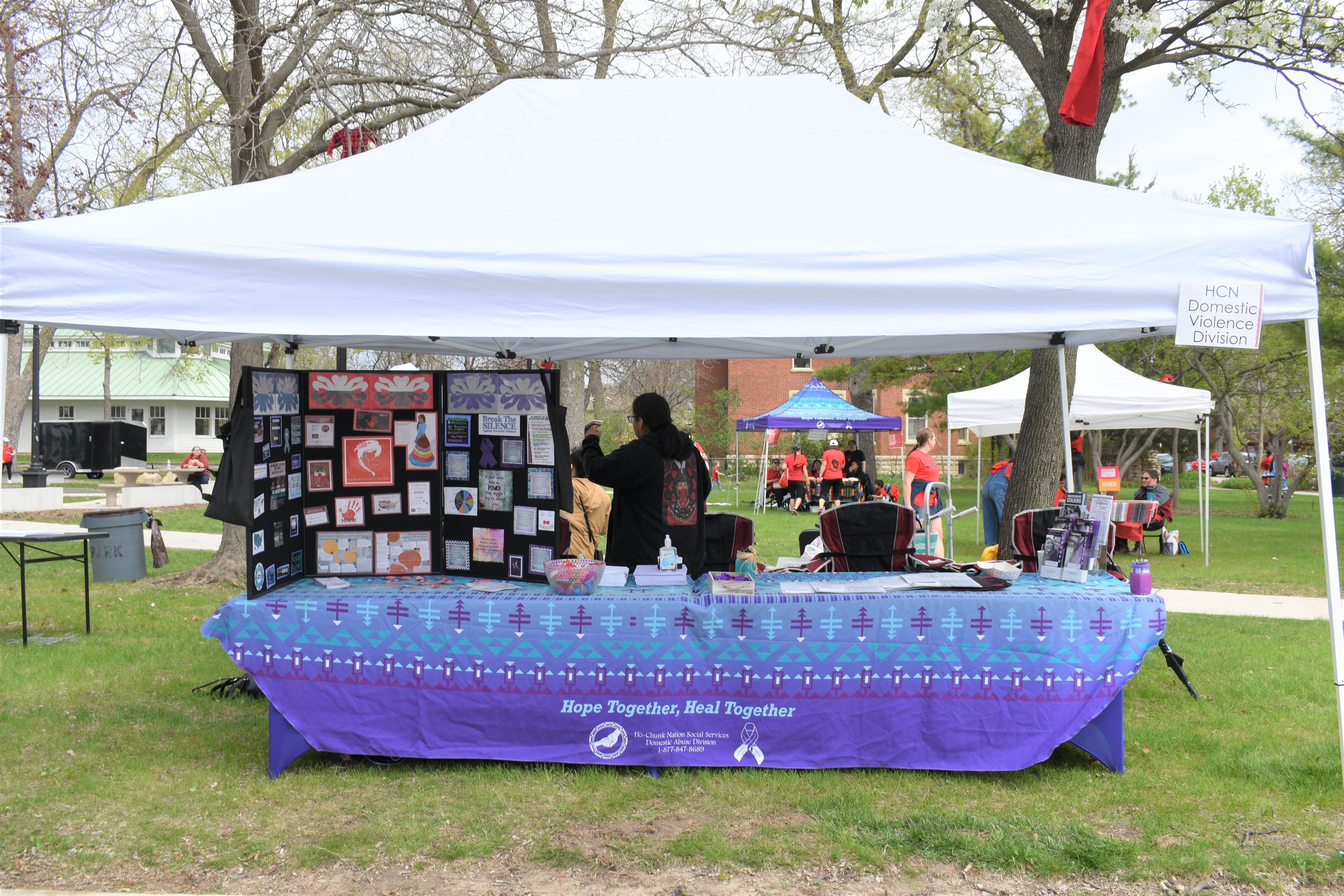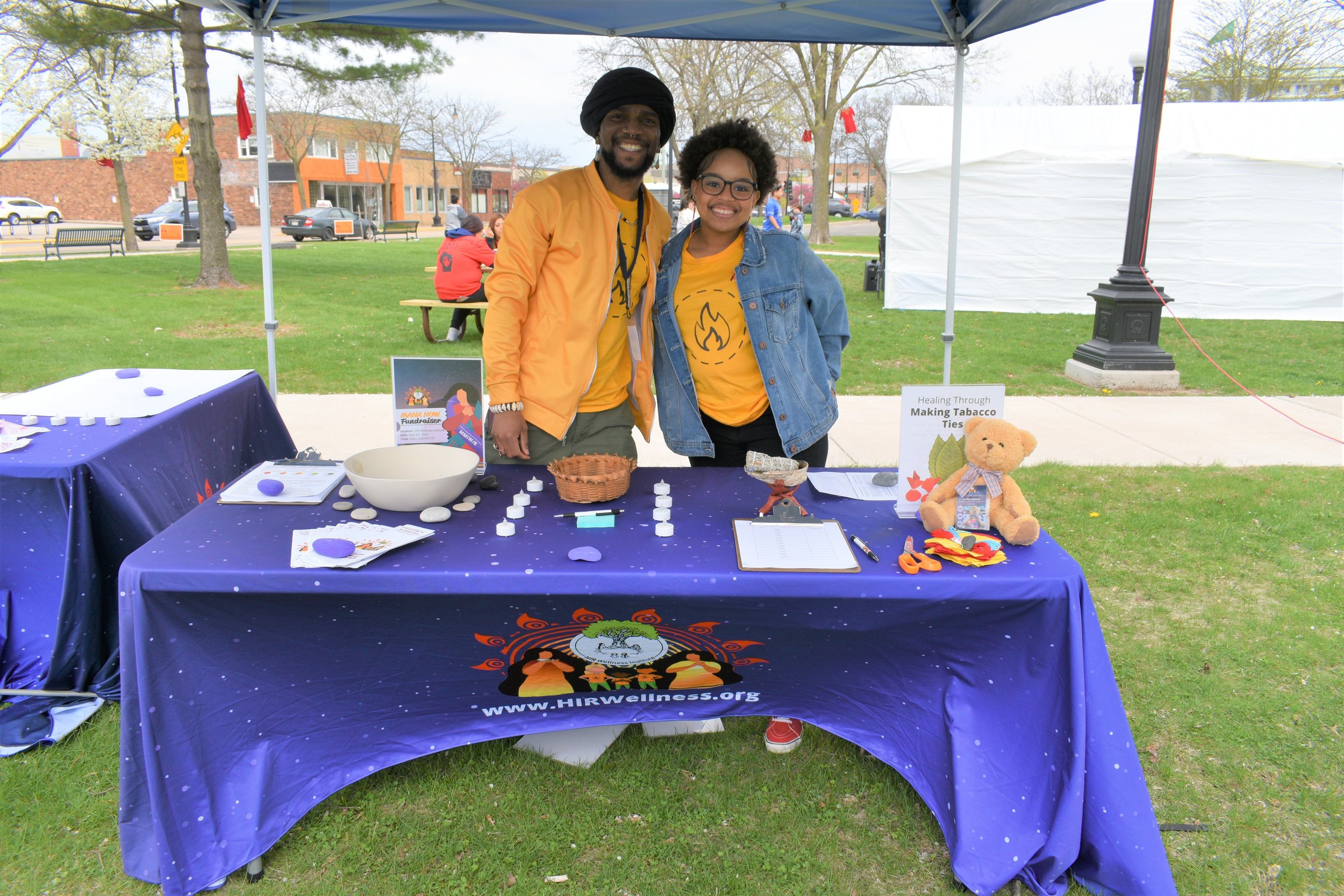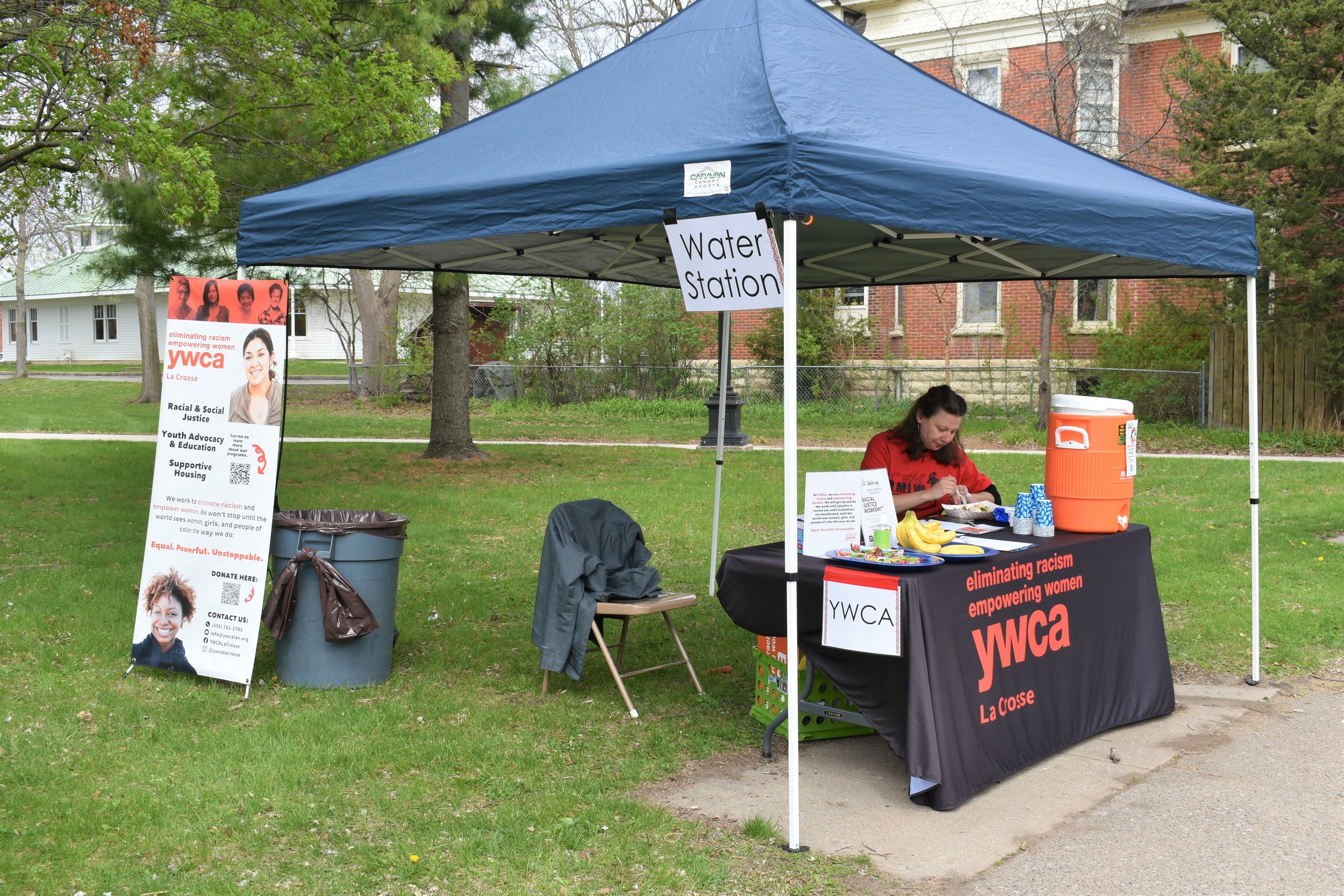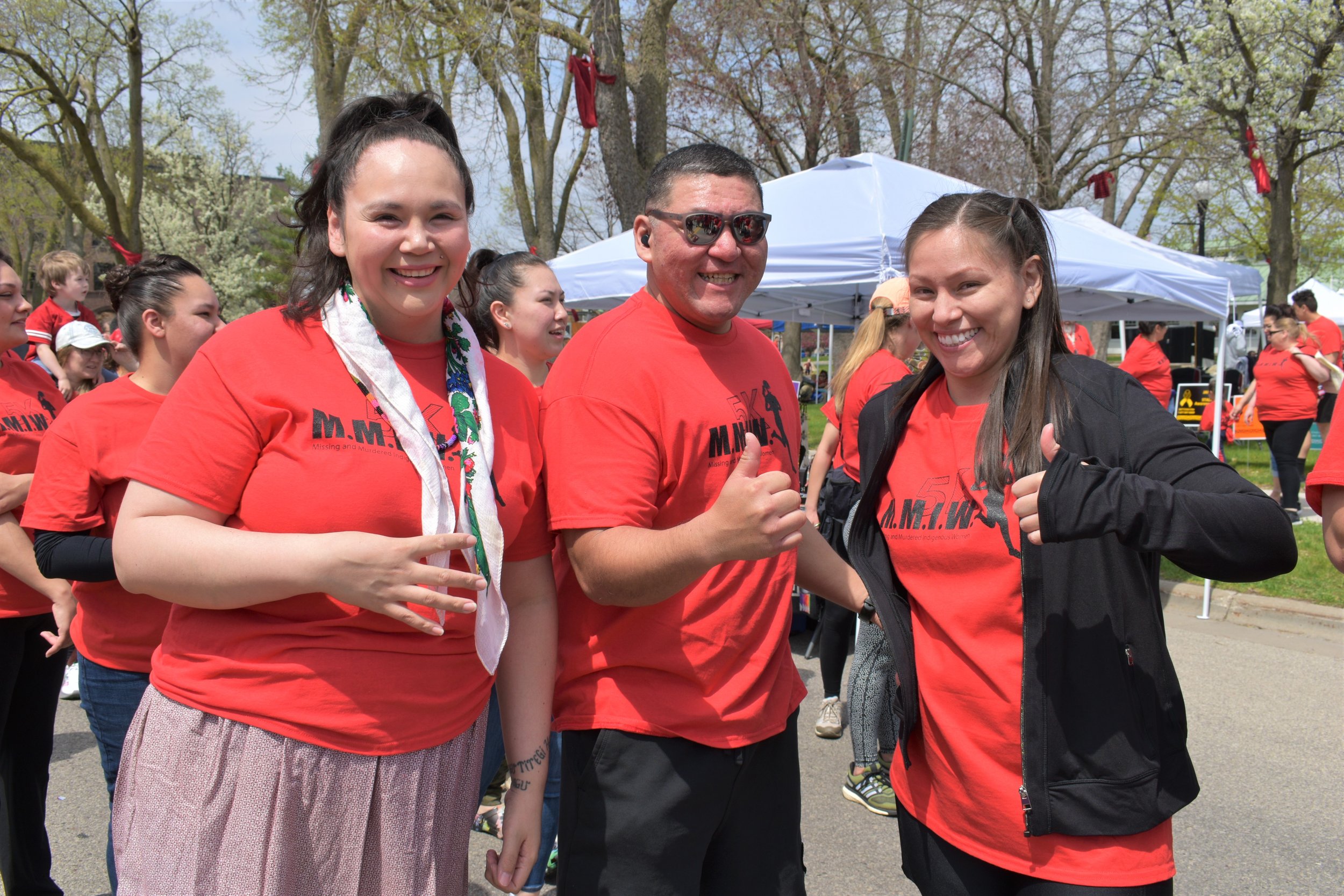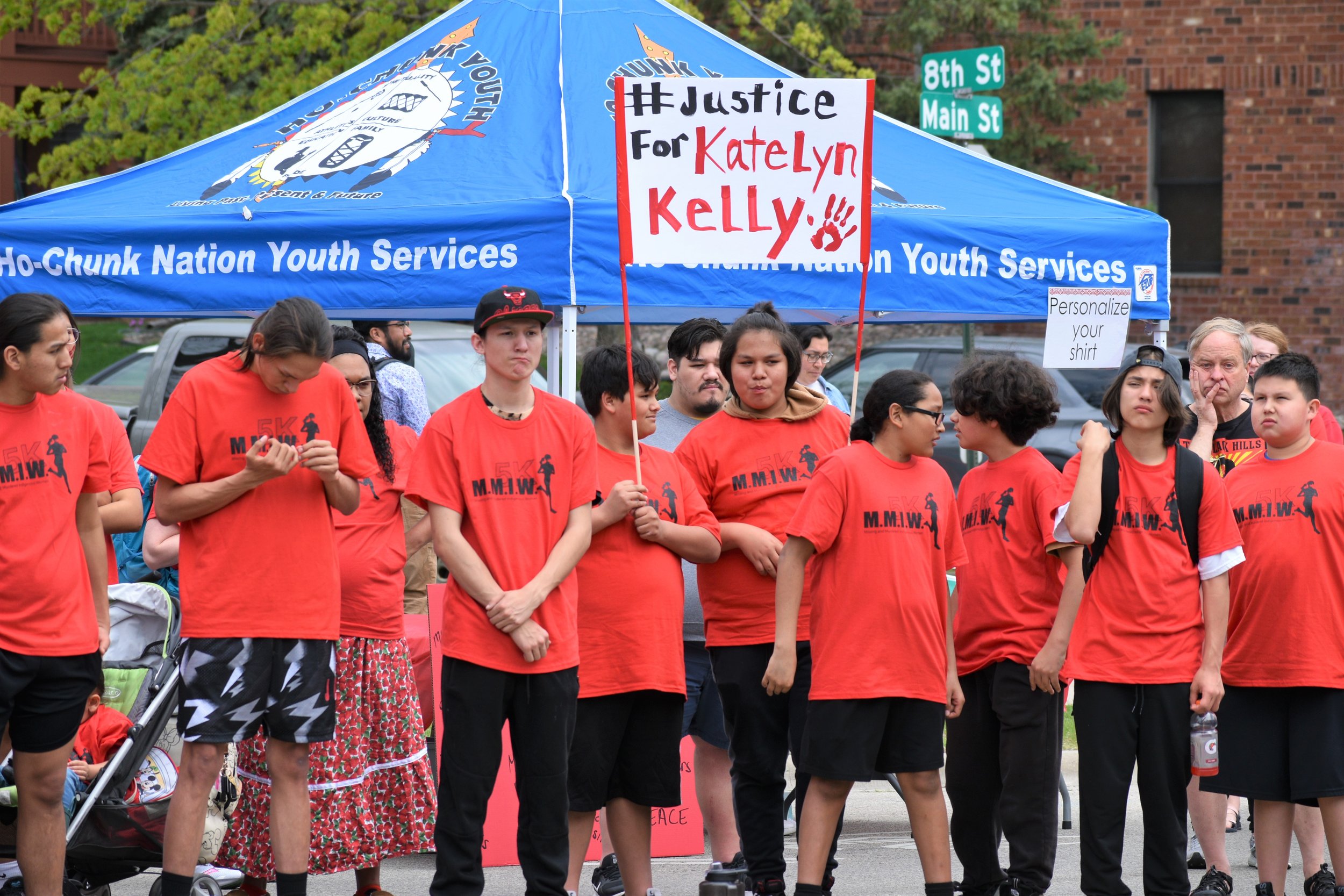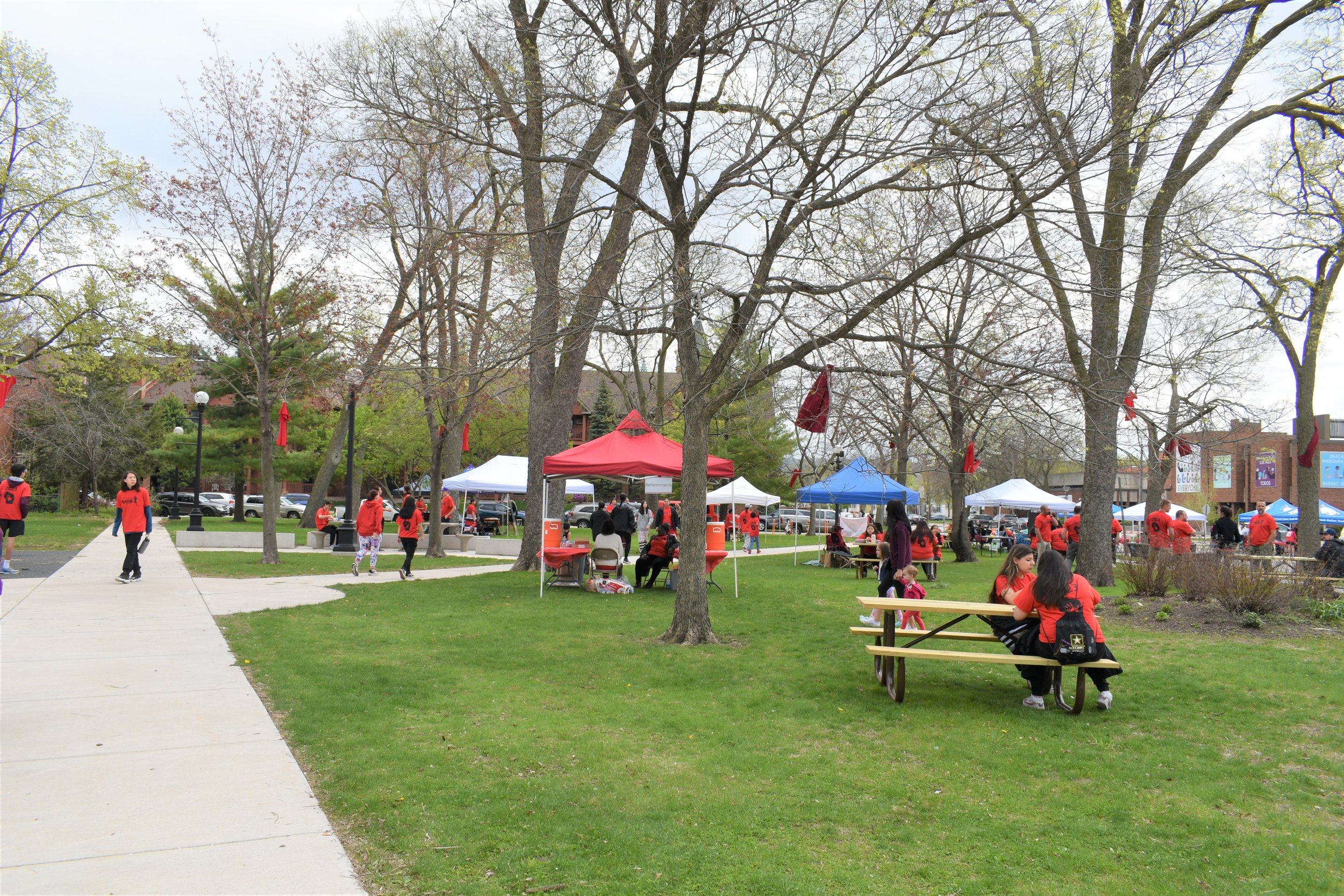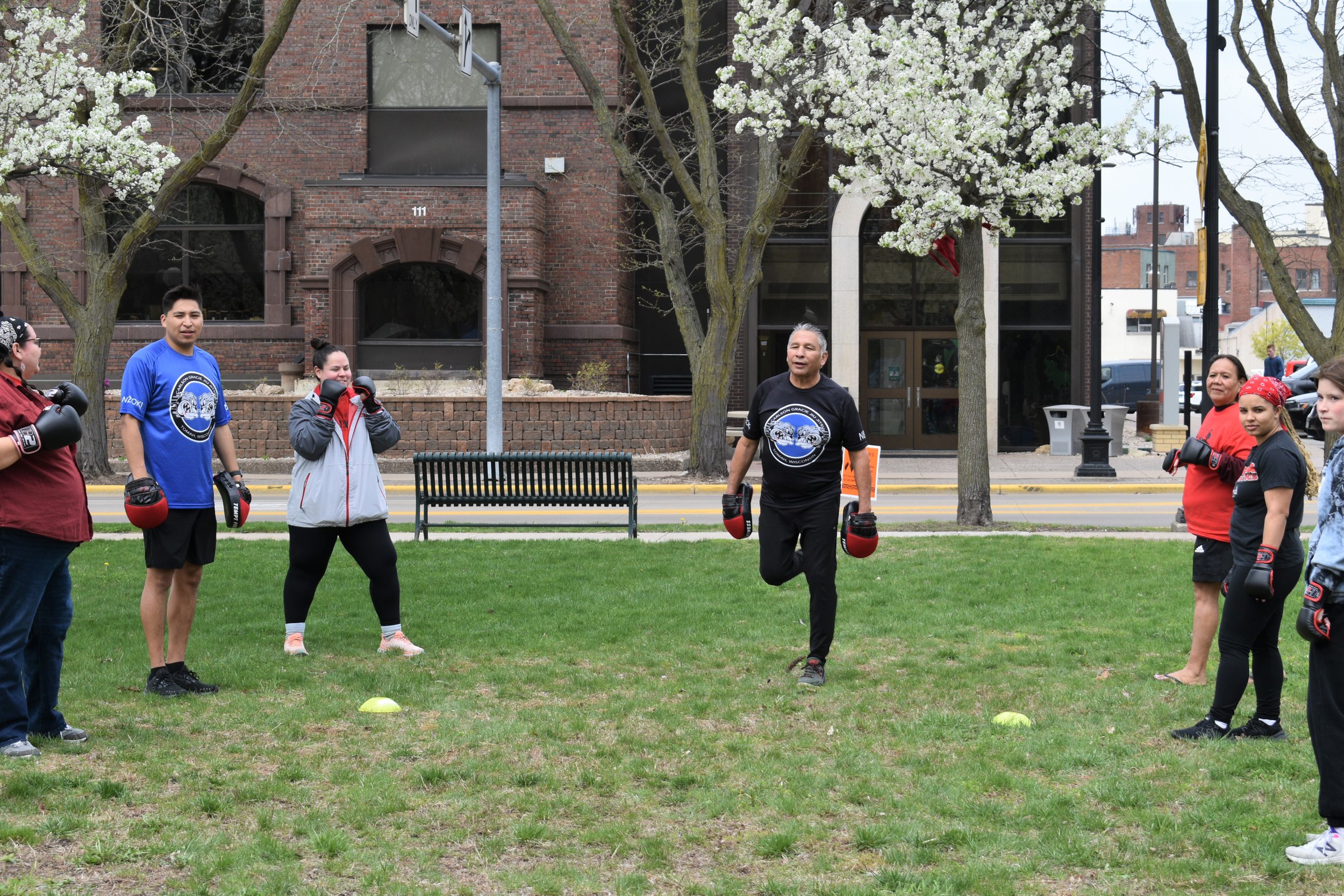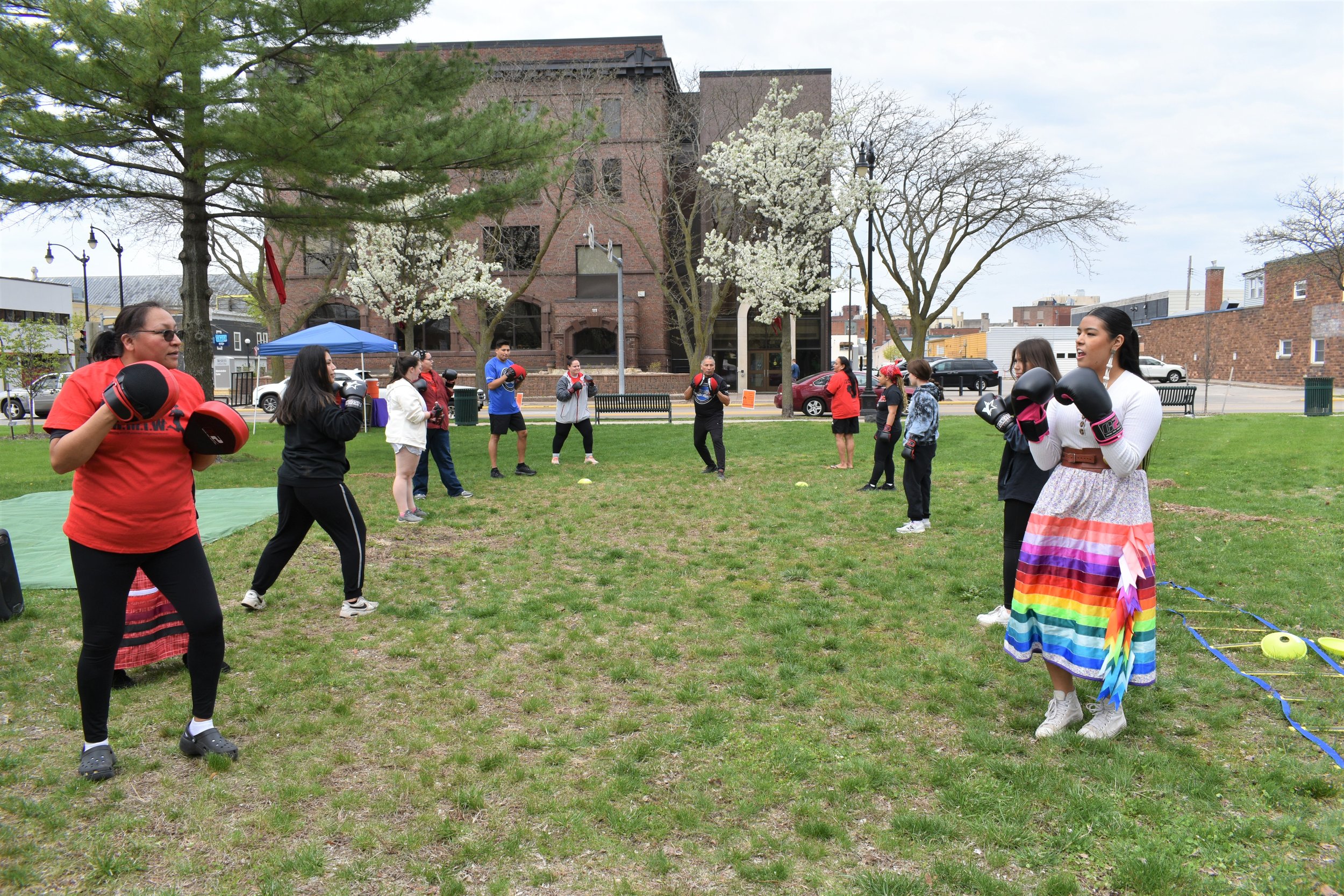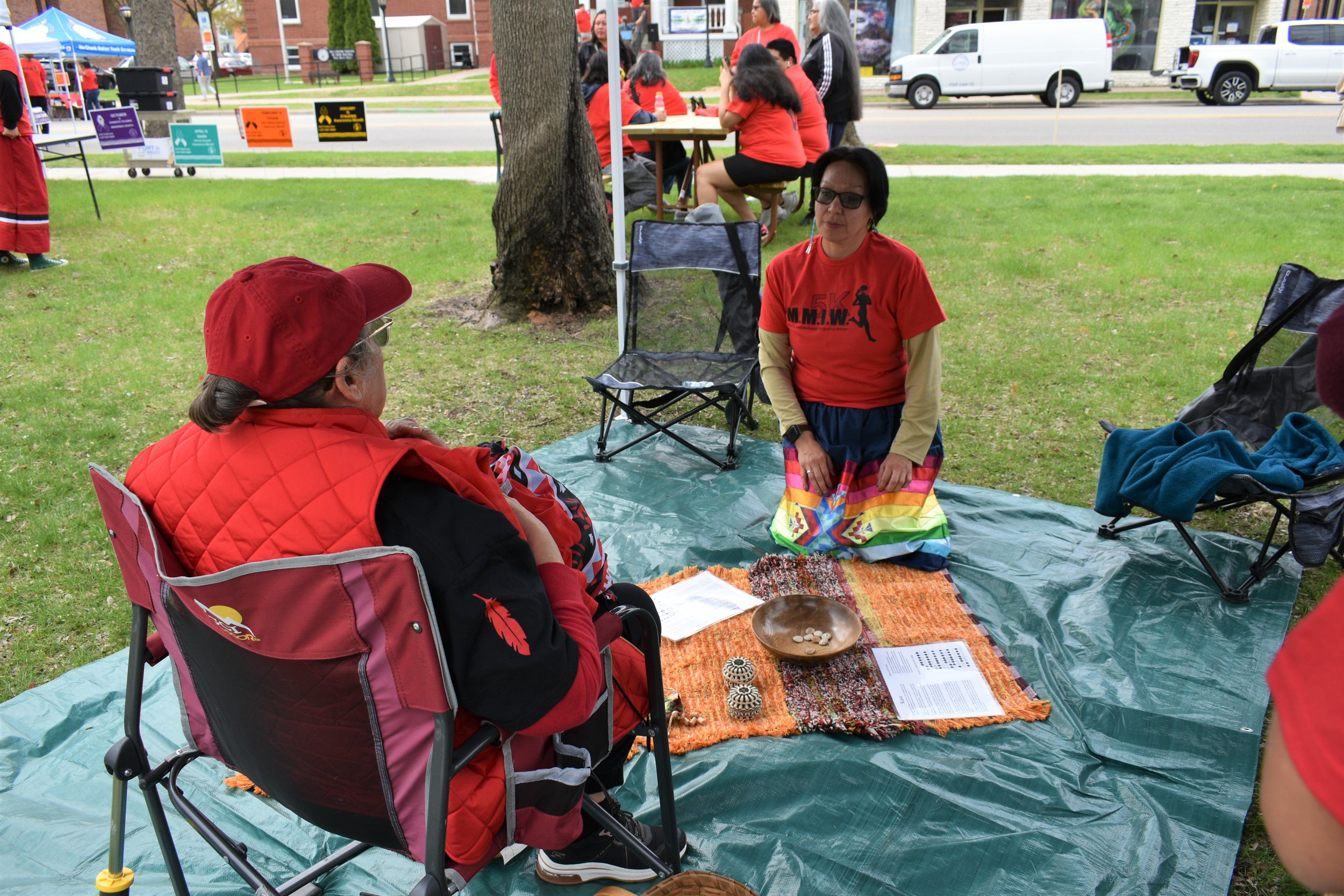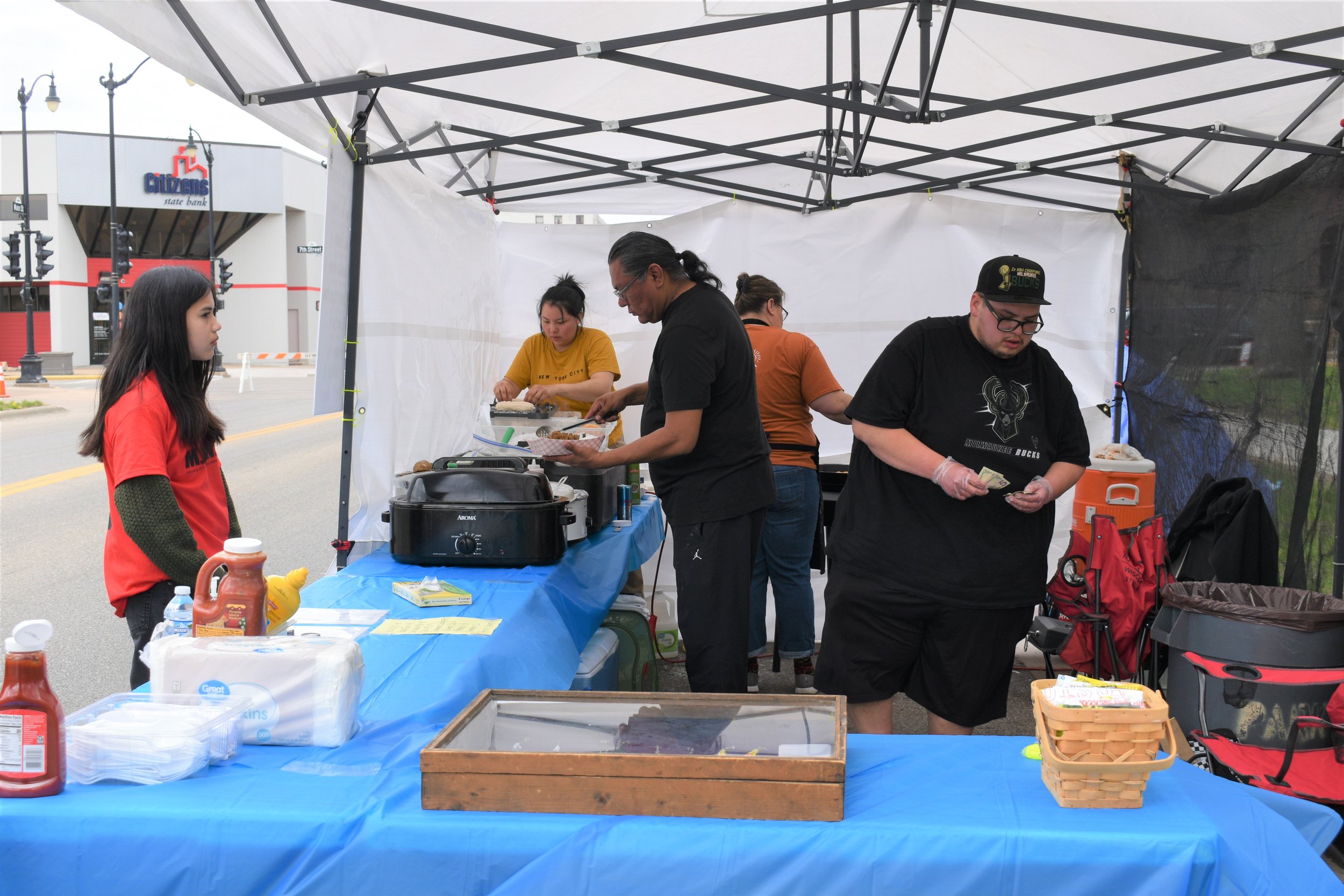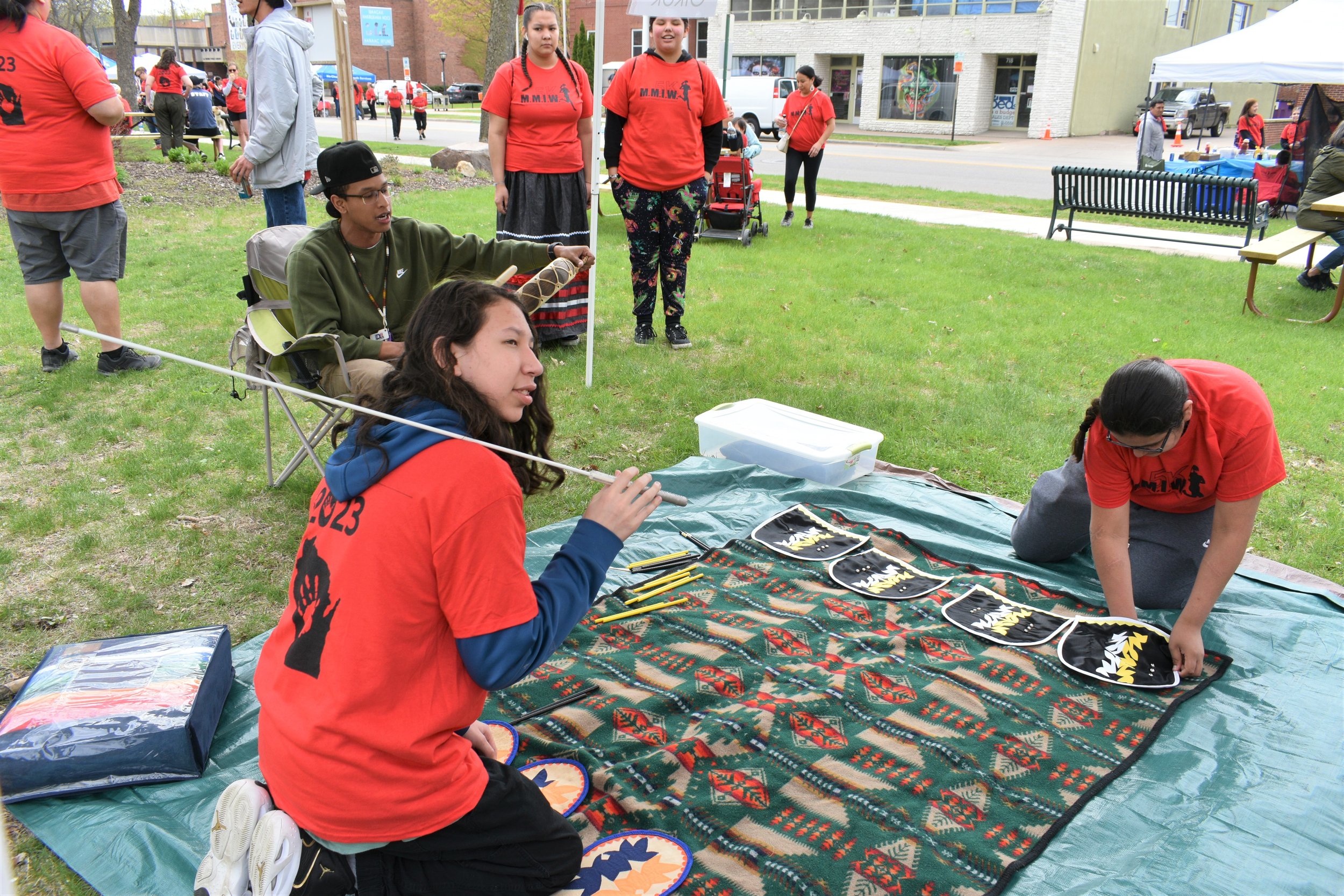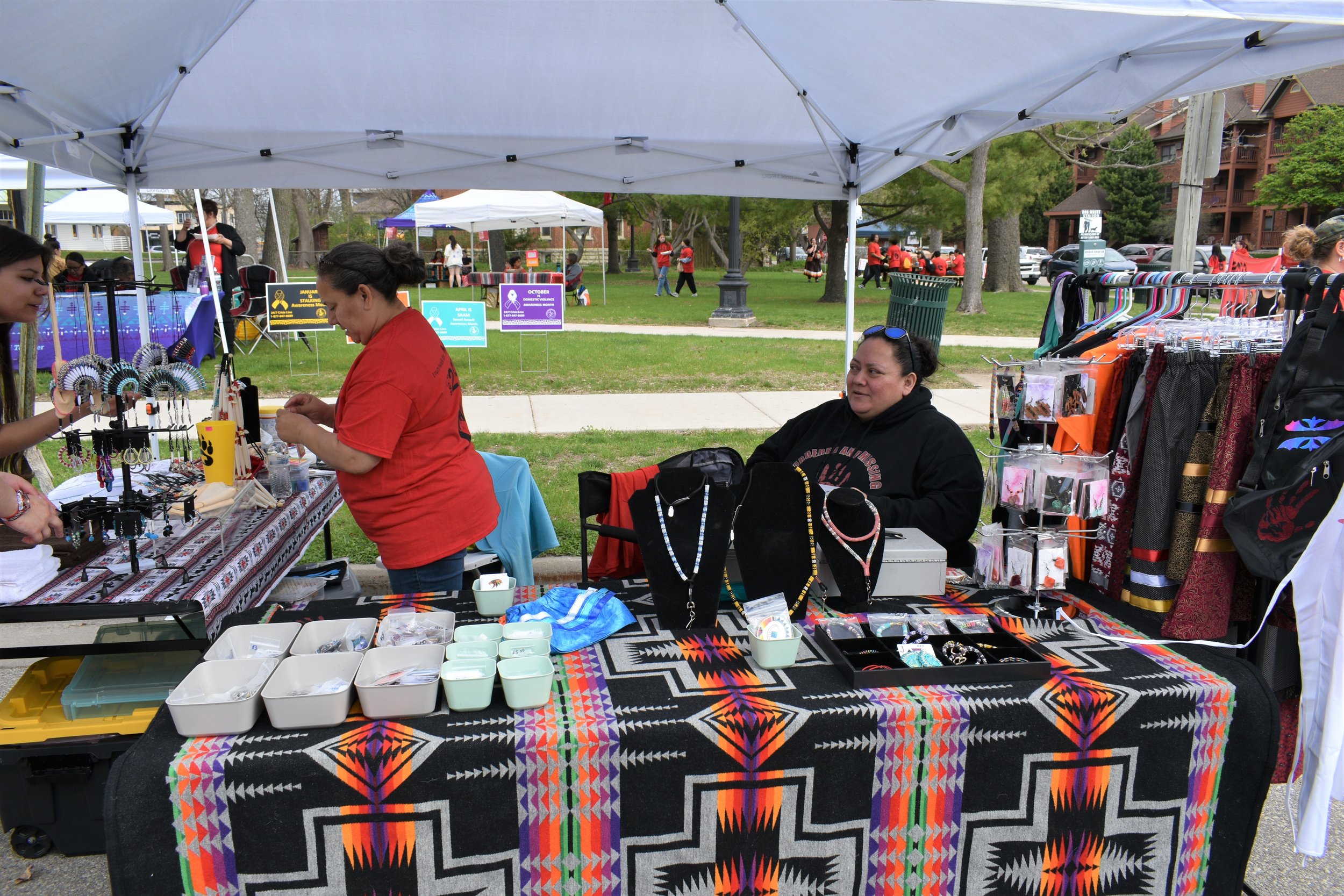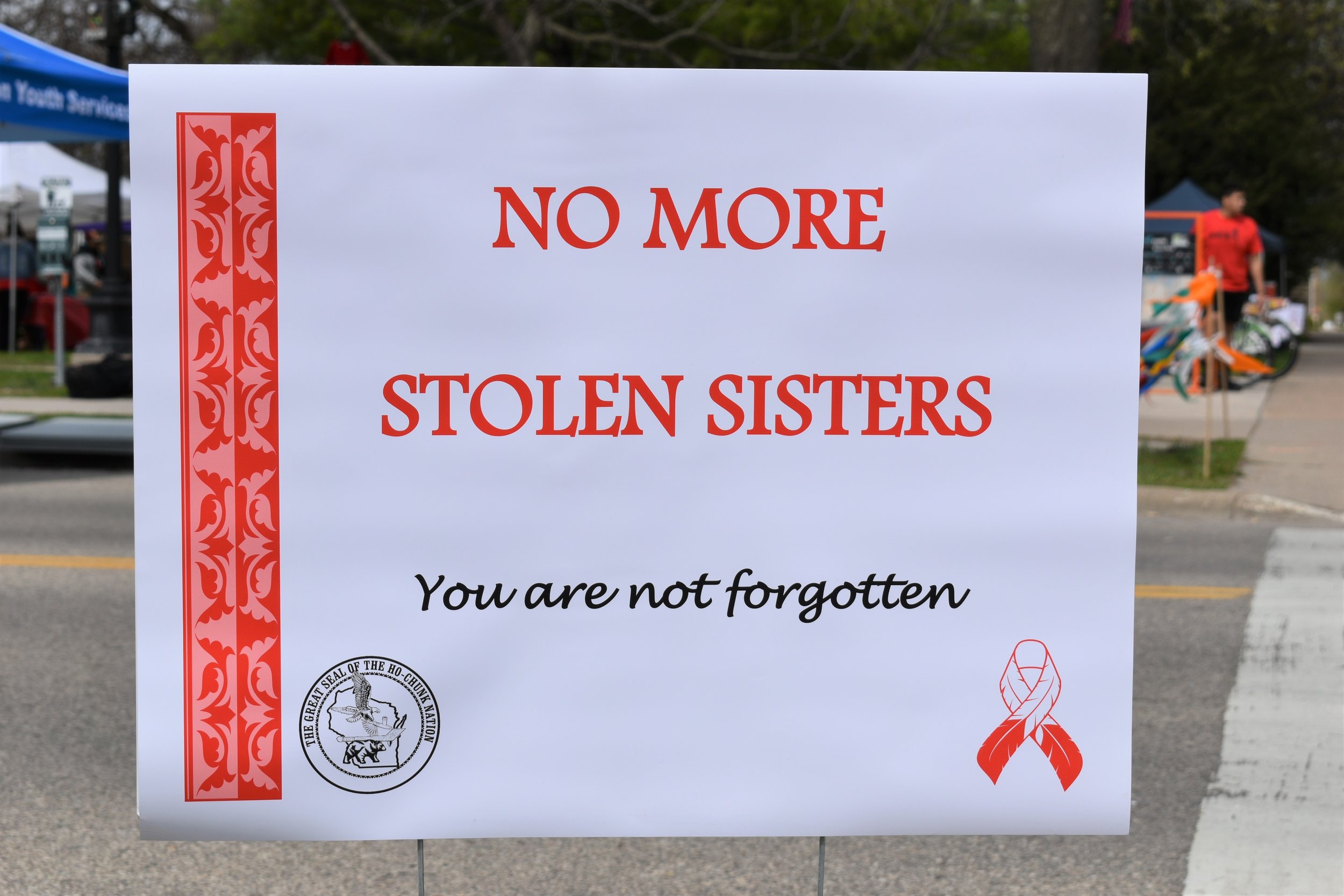Missing and Murdered Indigenous Women 5k run/walk held in LaCrosse
On May 5th, a couple hundred people gathered in Burns Park across the street from the Ni Tani Hocira (Three Rivers House) Hoocąk (Ho-Chunk) Nation La Crosse Branch Office in La Crosse, Wisconsin, for the second annual Missing and Murdered Indigenous Women (MMIW) 5k run/walk.
The event sponsored by the Hoocąk Nation, City of La Crosse - Parks, Recreation and Forestry Department, and the Hoocąk Nation Ni Tani Hocira (Three Rivers House), was a way to give those missing and murdered a voice, and to raise awareness in communities both Native American and non-native. But not just in Wisconsin, but across Turtle Island (North America).
“Native women are 10 times more likely to go missing or be murdered than any other race population. It's the third leading cause of death for our indigenous women and young women, and it's very real,” said Justine Rufus, a member of the Bad River Band of Lake Superior Chippewa, and co-chair for the Task Force of MMIW in the state of Wisconsin. She explained that in a small town of 1000 you may never hear of someone murdered and missing. “I come from a very small community, and I know in my lifetime of four women affected by this and that's not including men and children. That is a phenomenal amount of violence that's happening within our communities. People need to realize that we're in the United States of America, and we deserve to be treated right and not have to live in fear and be able to feel comfortable in our own communities. And that takes the work of everyone.”
The MMIW task force was created four years ago, and has asking questions about this crisis in Wisconsin. “We were tasked with finding out, is this real, is it happening here, and the answer is, we absolutely know that is happening.” The task force is creating a report that will be released this year, that includes recommendations for the state on how they can address this crisis now, and in the future. Rufus pointed out that Governor Evers has taken the first real action towards the issue of missing and murdered indigenous women ever in this country. “He put $8 million in the budget for an MMIW office, which was phenomenal. He also put increased funding for law enforcement which is needed and way overdue. But we're finding out that has failed in the Joint Finance Committee. It's not being put forward.” She stressed it is important to keep in mind that this effort of Evers’ hitting a road block is not a done deal, and is asking people to be aware of this and to contact their legislators. “We intend to move this forward independently in a bill if we need to, but something needs to be done. I know that nationwide there's all these reports that are being created state by state to prove an issue that we know exists. But we need real action, we need boots on the ground, we need more investigations in our missing persons cases, and we need more real funding that addresses this issue.”
One of the tools that tribal law enforcement lacks that’s crucial in investigating MMIW cases, is access and the ability to share critical information. Non-tribal law enforcement has access to the National Crime Information Computer, while tribal law enforcement does not. “Every single officer in the state has access that our tribal officers do not. So, we tend to play this telephone game. When there is a person that goes missing, we rely on our county partners to enter that information. So, there's a lot of misclassifications, a lot of missed data,” Rufus said.
Another problem tribal law enforcement faces are retention of their officers. See, tribal officers do not have access to the state retirement plan. Because of this, tribes find a lot of new recruits that join the force, get some hands-on experience only to move on to a non-tribal agency that offers security in a career that enables them to support their families. “Our officers shouldn't be treated any less to protect our communities. We're just as valuable. It's really important that treating us equally when it comes to how funding is distributed for the future of this crisis. That has to change, or this crisis isn't really going to be addressed,” she said.
LaCrosse Mayor Mitch Reynolds attended the MMIW event to show his support by walking the 5k and read to the crowd a proclamation of the city’s support of MMIW. “It's incredible to look out here on the sea of red,” Mayor Reynolds said. “We're in the center of our city. It is really an event where everybody can see us, right? This is a very visible event now. And we're really making a statement. We can let the entire city of LaCrosse know that we're here today for this very important event, really recognizing what an incredibly important issue this is for our community and for Indigenous women everywhere. So with that, I do have a proclamation; Whereas the National Institute of Justice reports that 84% of American Indian and Alaska Native women have experienced violence in their lifetime and more than half experienced sexual violence. And whereas according to the Centers for Disease Control and Prevention, homicide is the third leading cause of death among American Indian and Alaskan Native women between 10 and 24 years of age, and the fifth leading cause of death for American Indian and Alaska women 25 and 34 years of age, and whereas in 2016, the National Crime Information Center reported nearly 6000 cases of missing American Indian and Alaska Native women and girls, but the US Department of Justice was tracking only about 100 cases. And whereas, still little data exists on the number of missing American Indian and Alaska Native women and girls in the United States. But there have been instances of violence towards Indigenous women and girls from the 11 Wisconsin native American tribes. And whereas systemic risk factors such as poverty, homelessness, violence, sex trafficking, and prostitution are root causes of violence to Indigenous women, children and Two Spirit people. And whereas complex or problematic relationships among the jurisdictions and systems and a lack of understanding of tribal sovereignty, laws and culture causes ineffective investigations, lack of prosecution, and absence of closure for families. And whereas the city of LaCrosse aligns with the state of Wisconsin and the United States of America, by joining the Missing and Murdered Indigenous Women Task Force in commemorating the lives of all missing and murdered indigenous women and girls, regardless of whether their cases have been documented in public records or the media, and stand in solidarity with the families of the victims of these senseless tragedies. And whereas it is of utmost importance for the city of LaCrosse to work collaboratively with local tribal nations and partners to create solutions to violence that are victim centered, trauma informed, and culturally appropriate. And whereas today and each May 5th Going forward, we mourn and call attention to all missing and murdered indigenous women and girls throughout the state and country, as well as all those who've experienced violence and assault, and resolve to act to prevent further victimization. Now therefore, I Mr. Reynolds, Mayor of the city of LaCrosse, do hereby proclaim May 5th, as day of awareness for missing and murdered indigenous women and girls in the city of LaCrosse. Dated on this fifth day of May 2023.”
“This is a lot of times what we're talking about. We are talking about a lot of numbers and just talking about in the abstract, but this is all real people,” said Hoocąk Public Relations Officer Casey Brown while emceeing the event. “These are mothers, these are sisters, these are friends, these are relatives.”
Hoocąk Social Services Domestic Abuse Division had representatives onsite to inform the public what they do within the tribe, and let Hoocąk that attended what is available to them. CAMPsite (Community Activated Medicine Provider Site) traveled from Milwaukee, to support the event and let people know how they can help with this issue. According to their website, CAMPsite and the HIR Wellness Institute, is a survivor and women led organization that is shaping the next generation of providers while offering free mental health and wellness services to Indigenous and underserved communities. The organization seeks to learn from ancestors’ teachings and the ways of governance.
One way to mitigate being abducted is, of course, women and girls knowing how to defend and protect themselves from physical threats. Coka U Gym based in Tomah, Wisconsin held a few introductory classes aimed at just that. Owned by Hoocąk tribal member and martial arts and boxing instructor Bobby Bird, Coka U Gym not only teaches self-defense, but whole-body wellness. Bird, a black belt under Carlson Gracie Jr. out of Chicago, started in martial arts when he was in college 25 years ago. “I studied under his father and it became a passion. I've been back in Tomah 30 years now. I wanted to bring Brazilian Jujitsu to our Hoocąk people in the small town of Tomah, with the hopes of empowering everybody, helping them find a different way of expressing themselves, building their self-confidence, and building their self-esteem through martial arts,” Bird said.
He shared that he has traveled all over the country meeting and sharing with people the self-defense benefits and importance of Brazilian Jujitsu. “We want to empower women, making them aware, and bring to their attention what a predator is looking for. We know predators can even be family members. They can be people they know, people they work with, and we hope to teach them their surroundings, to know where they're at, and what to feel with this jujitsu background. It's empowering them to help them control the situation if it ever was to arise.” That is what Bird said they hoped to accomplish by holding short introductory classes at the event. He continued, “There are different phases for self-defense. We first want to make women how to be aware of a potential predator and not to make themselves catch their attention. We want to instill self-confidence in them, where when a predator looks at them, the predator will do a second take and say, ‘okay, let me find somebody who's not as confident in themselves’. We're trying to instill confidence and teach them how to walk around and know their surroundings. In our self-defense clinic, we teach multiple situational self-defense techniques. What trying to do here today, is share this passion with everybody.”
In its second year, the LaCrosse MMIW walk/run was started by Henry Greengrass, the Center Director for the Hoocąk Nation LaCrosse Youth and Learning Center. I would be remiss if not to mention that Henry is a very humble human being. He likes to be in the background working to help people. But credit is due. It should be noted that by no means am I putting him on a pedestal, but rather recognizing his dedication to this under reported on crisis. See Henry, half Hoocąk and half Bad River Band of Lake Superior Chippewa, has a close connection to MMIW. He grew up with Justine Rufus up North. It was not until his adult years that he moved down by his Hoocąk side of his family. More importantly, Henry became a single parent when his daughter’s mother passed away when she was 22 months old. With help from his mother and his sisters who helped guide his daughter Isis with proper women teachings, today Isis is an amazing, independent and good young woman.
Henry admits it was not easy being a single father, and like most father’s, he always prayed and was concerned for the safety of Isis, especially in the dangerous world she was growing up in. The thoughts of her getting hurt, abducted or worse, were never far from his mind, adding to his fierce dedication to protecting her.
But Henry’s concern for his daughter eventually led with the help of Rufus, to the idea of holding a walk/run in LaCrosse to bring to the forefront the crisis of Missing and Murdered Indigenous Women. Having experience organizing other runs and events, Henry said he did have a lot of help getting things together and acknowledged Heather Quackenboss from the UW-LaCrosse Extension as a key player in the days event.
Surely a man with the dedication that Henry has for supporting and promoting awareness of MMIW, must have some deep personal feelings about his drive. “This crisis of murdered and missing indigenous women and girls has always been here. Even when I was younger, one of the women whose name was read on the City of LaCrosse resolution was Angie White Bird. Well, there's a few of them on there that I knew. I remember her, she's from Bad River. My mom did have some interactions with Angie, my mom knew her from up North. I remember hearing about when they found her body. There were other people who aren't even mentioned in that resolution that we've lost. To me, it's important to get that information out there. I'm a father of a 22-year-old daughter today, Isis, and she's my pride and joy. I realized that I couldn't change the world to accommodate my daughter, right? So, I needed to prepare my daughter for when I'm not here. Native American women are three times more likely to be sexually assaulted than a non-native. I guess that's my biggest fear, when I'm not here anymore. I'm 48. Life expectancy for a Native American male actually decreased to 61 according to the Center for Disease Control,” said Henry.
Henry took the step of signing Isis up for the Women initiating Safe Environment (WISE), a self-defense instruction program for women through the Three Rivers Martial Arts Academy. “She's actually attended that program three times and was one of the youth instructors.”
Having grown up with Rufus, and familiar with the work she was doing as co-chair for the MMIW task force, Henry felt this was something he wanted to be a part of, not only to help safe guard all Native women and girls, but also his daughter.
Henry believes that being active in your daughter’s life is important. Teaching them how to avoid situations that can/could lead to tragedy, caring for them, and loving them, he stressed, are essential in raising a confident woman. “Yes, it’s holding her hand, but also encouraging her to be that strong, independent woman. I am lucky that I have sisters and my mom that helped me with her. They made her strong,” he said with a smile.
People that paid $5 to register for the 5k run/walk received a Red MMIW shirt. At the conclusion of the event, Greengrass presented $1,156 raised by those registrations to the New Horizons Shelter and Outreach Center of LaCrosse Executive Director, Ann Kappauf. According to their website, New Horizons Shelter and Outreach Centers provide safety and services to adults and families who have experienced domestic and sexual abuse so that they can make decisions about their lives in a supportive, nonjudgmental and empowering atmosphere. They promote the concepts of non-violence and equality through intervention, prevention and education.
In addition to the run/walk shirts being red, red dresses were hung in the trees around the park that memorialized those women and girls either missing or murdered. In Native American culture it is said that red is the color that spirits can see.
In Native American Culture, women/girls are gifted by Creator to be life givers. They are to be respected and revered, not taken advantage of, abused and especially not murdered. No matter how uncomfortable this crisis may be to talk about, it is never a crisis that should be swept under the rug or kept quiet. Remember, those missing or murdered are daughters, granddaughters, sisters, mothers, and aunts. But most importantly, human beings that deserve respect and a full life.
If you suspect abuse, or have information on a missing indigenous woman or girl, or have information on a murder, don’t be silent Contact your tribal or local law enforcement agency and MMIW. Let’s bring them all home safe, or their remains to rest.
Special acknowledgment and thank you to The Bad Fish Creek drum and singers for sharing their songs and singing the MMIW song composed by Avalon Falcon.
